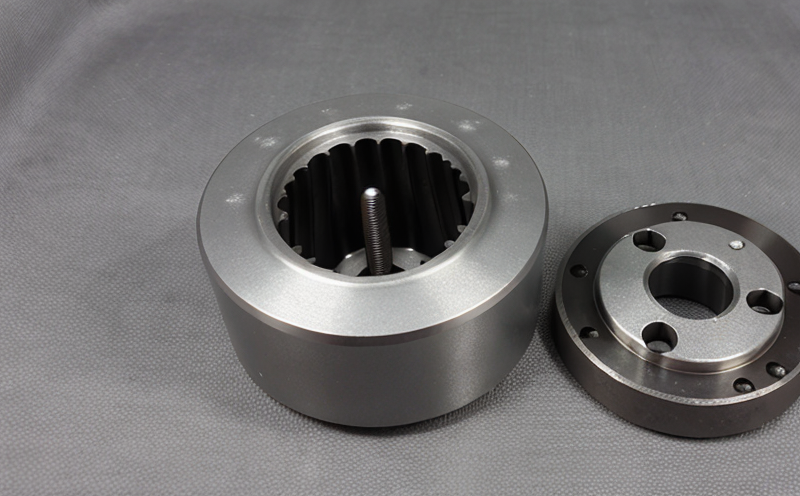ASTM E647 Fatigue Crack Growth Testing of AM Steels
The ASTM E647 fatigue crack growth (FCG) testing method is a critical quality assurance and reliability assessment tool for additive manufacturing (AM) steels. This test evaluates the resistance to crack initiation and propagation under cyclic loading conditions, which are typical in many engineering applications.
Developed by ASTM International, this standard provides a standardized approach to measure the fatigue life of materials subjected to cyclic loading. The method is particularly important for AM steels due to their unique microstructural characteristics that can significantly influence mechanical properties and performance under cyclic loads.
The test involves subjecting specimens to controlled cyclic stress cycles until crack growth reaches a specified length or critical size, as defined by the standard. This process allows engineers and quality managers to assess the fatigue life of AM steel components before they are used in real-world applications.
During ASTM E647 testing, it is crucial to follow strict specimen preparation protocols to ensure accurate results. The specimens must be free from defects that could influence the outcome of the test. This includes careful cleaning and any necessary heat treatments or mechanical finishing processes as per the standard.
The test setup typically involves a fatigue testing machine capable of applying controlled cyclic loads to the specimens. The load is gradually increased until crack growth reaches a predefined threshold, which is then measured using high-resolution imaging techniques. This ensures precise determination of the critical crack length at which failure occurs.
For AM steels, the unique microstructure can lead to different fatigue behavior compared to conventionally manufactured materials. ASTM E647 provides specific guidelines for specimen preparation and testing parameters that account for these differences, ensuring accurate and reliable test results.
The ASTM E647 standard also includes acceptance criteria based on crack growth rates and the number of cycles before failure. These criteria help in determining whether a material meets the required performance standards for its intended application.
By employing ASTM E647 fatigue crack growth testing, manufacturers can ensure that their AM steel components meet stringent quality control requirements, thereby enhancing product reliability and safety. This test is particularly valuable in industries such as aerospace, automotive, and medical devices, where component durability and integrity are paramount.
Industry Applications
| Industry | Application |
|---|---|
| Aerospace | Evaluation of engine components for cyclic loading resistance. |
| Automotive | Assessment of transmission gears and structural members under cyclical stress. |
| Medical Devices | Testing hip implants and other joint replacement components for fatigue resistance. |
| Military | Evaluation of armor plating and weapon systems under cyclic loading conditions. |
| Test Specimens | Description |
|---|---|
| Straight Notched Bars | Used to simulate crack initiation and propagation in structural components. |
| Flat Plate Specimens | Designed to assess the fatigue behavior of flat surfaces under cyclic loading. |
| Tension-Compression Bars | Evaluates the fatigue strength in components subjected to alternating tension and compression loads. |
Why Choose This Test
The ASTM E647 fatigue crack growth testing method is essential for ensuring the reliability and durability of AM steel components. By employing this test, manufacturers can identify potential weaknesses in their materials early in the development process, allowing for necessary modifications to improve performance.
One key advantage of using ASTM E647 is its ability to provide insight into the microstructural behavior of AM steels under cyclic loading conditions. This information is invaluable for optimizing material properties and ensuring compliance with industry standards. Additionally, the test helps in meeting regulatory requirements by providing a standardized approach to quality assurance.
The method also offers cost savings by identifying issues early in the development process, thus reducing the need for costly redesigns or recalls later on. Furthermore, ASTM E647 ensures consistency across different testing facilities, which is crucial for reproducibility and comparability of results.
By leveraging this test, manufacturers can enhance their reputation by delivering high-quality products that meet stringent performance standards. This not only boosts customer confidence but also opens up new market opportunities in competitive industries.
International Acceptance and Recognition
- ASTM E647 is widely recognized by major international standards organizations such as ISO, EN, ASTM International, and IEC.
- The test method has been adopted in numerous countries around the world for quality control and reliability assessment of AM steel components.
- Many global regulatory bodies use ASTM E647 as a benchmark for ensuring product safety and performance.





